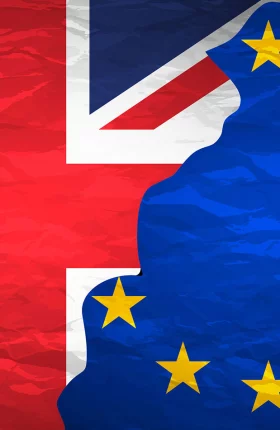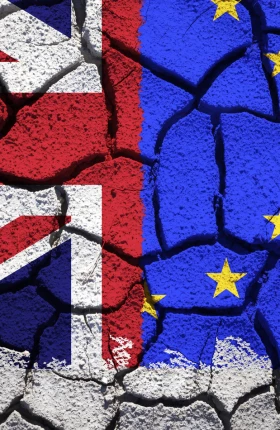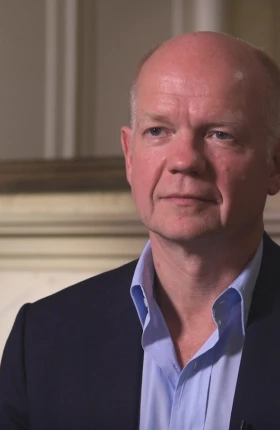T he Leave campaign’s victory, with a margin of 3.8 percentage points, has likely ushered in a protracted phase of uncertainty for the UK, EU, and global economies. A systemic shock cutting across industries and borders, Brexit poses significant strategic challenges for business leaders as they navigate the fallout. Judging by our interactions with CEOs around the world to date, some of their burning questions are:
- What are the elements of uncertainty created by Brexit?
- How can leaders develop a specific view of the industry- and firm-level implications?
- What are the first-response imperatives for corporate leaders?
- What structural changes to the business environment are triggered by Brexit, and how do we adapt to them?
This is how we recommend CEOs approach these difficult questions.
Identify the Sources of Uncertainty
The uncertainties that come with Brexit can be ordered into four categories. While the overall directional impact is generally clear, it’s the magnitude, duration, and differential that are more critical to determine.
Political Process. There are significant drivers of uncertainty domestically and abroad. At home, the UK faces dissolution pressures if Scotland seeks to salvage its EU membership, while the EU has every incentive to make Brexit a painful experience to deter other defectors, making the outcome of negotiations difficult to predict. These unknowns have the potential to influence the evolution of the financial, institutional, and real economies.
Financial Economy. The directional impact on key prices was widely predicted—and strong corrections to the pound (–11% versus the dollar) and to equities (–13.6% FTSE250) were indeed recorded in the first two sessions after the vote. The Bank of England will likely lower policy rates, or even adopt negative interest rates. What drives uncertainty are the magnitude and duration of these corrections; as prices guide resource allocation, their volatility and uncertainty interfere with planning and investment decisions.
Trade Regime. The reconstruction challenge for the UK’s trade regime is clear. The EU represents 47% of UK exports, facilitates an additional 13% through non-EU trade deals, and currently negotiates with countries worth an additional 21% of UK exports. While the UK would need only eight bilateral trade agreements to cover 80% of its current exports, there is a long tail of 18 additional countries worth more than $1 billion in UK exports and an additional 132 countries to cover all existing exports. Both internal and external factors drive uncertainty about the duration and outcome of the reconstruction challenge—for example, the UK’s ability to negotiate agreements, having outsourced this task to Brussels for 40 years, or trade partners’ willingness to engage with Britain in a constructive and timely manner.
Real Economy. The transmission mechanism to the real economy is primarily via delayed or canceled investment decisions or the anticipatory redeployment of employment or production assets. Here, too, the directional impact has been analyzed credibly, with estimates ranging from 3% to 9% of GDP loss. Here it is the speed, depth, and duration of these effects—on demand, consumption, and employment across industries—that drive uncertainty.
Determine the Specific Industry- and Firm-Level Implications
Industries and individual companies vary widely in terms of the impact on the uncertainties outlined above, due to their differential dependence on UK and EU production, demand and trade, global trade, regulation, and integration into EU structures (such as R&D subsidies and EU norms and standards). Therefore each company needs to carry out (or take to the next level) its own specific impact analysis.
It is impossible to forecast precise impact with confidence, given that exit terms, timing, and knock-on implications are all uncertain. A scenario-based approach to planning, modeling, and preparing for multiple outcomes is therefore recommended. This can be done in four steps:
- Attach a “value” to each source of uncertainty—strong versus light currency depreciation, high versus low future EU market access—along with your perception of likelihood (plausible, likely, unlikely) to build an “ uncertainty map .”
- From the map, combine various values to develop multiple scenarios. The scenarios should be made internally consistent by avoiding contradictions (for example, by combining political uncertainty with lower volatility).
- Consider the industry- and firm-level sensitivities to these scenarios. The key questions are about the impact on your firm’s business model, operating model, EU institutional arrangements and financial structures, and performance.
- Use the scenarios and sensitivities that you’ve identified to test the resilience of your current plans, highlight risks, formulate response options, build capabilities, and reflect the results in strategies and initiatives and in risk management.
For example, a US industrial conglomerate with a strong market presence in the UK and a spatially fragmented value chain may find its strategic sensitivity is highest to the UK’s potential failure to replicate the EU’s global trade access. Expecting growing protectionism, a plausible strategic response could be aggressively defragmenting its value chain and concentrating production in the UK (so as to counteract the rising cost of trade). In some cases, companies will feel confident enough to bet on particular scenarios; in others, they may wish to diversify measures to become scenario-agnostic or to create options and boost agility to be able to move decisively when matters become clearer.
Turn Thoughts into Action
In addition to initiating the strategic impact assessment outlined above, it is important that business leaders translate their insights into action. Immediate actions include:
- Inform employees and stakeholders of the industry- and company-specific facts (liquidity, stability of existing trading arrangements, and so on). Create confidence by showing that issues are being carefully considered, and define the process.
- Confirm that the impact will take time to play out. Emphasize that little is likely to change in the short term in legal and trading arrangements, although markets may be jittery until negotiation outcomes are clear.
- Continually update the industry and company assessment as events unfold. Run scenarios. Design contingency plans and reflect any insights in your strategies for growth, geographic footprint, global supply chain, and risk management.
- Don’t let a communication vacuum open up. Keep talking about progress against goals.
Adapt to the New Post-Brexit Business Environment
Once a response to Brexit has been initiated, forward-looking business leaders will ask themselves, What’s the bigger picture? What structural changes does Brexit signal? How has the business environment changed and how must business practices be adapted for short-term survival and long-term advantage?
Brexit appears to be consistent with structural changes to the business environment that were already under way. While business has already become more sensitive to geopolitics, the politics of discontent and populism may prove to have an even bigger impact. Brexit highlights the plausibility of similar uncertainties unfolding in the US and in other countries.
This calls for two conclusions as business leaders strive to make sense of the new environment . The first is a renewed emphasis on strategy under uncertainty , with a focus on flexibility, adaptiveness, and resilience. The second is that many businesses now need enhanced capabilities to effectively capture and translate the macroeconomic and political developments for industry- and firm-level implications. Conditions will likely be very different for different parts of any business, especially for large and global companies, making it even more imperative to select the right approach to strategy and execution for each segment.
This article was originally published at www.hbr.org . It is reposted with permission of Harvard Business Publishing.
The BCG Henderson Institute is Boston Consulting Group’s strategy think tank, dedicated to exploring and developing valuable new insights from business, technology, and science by embracing the powerful technology of ideas. The Institute engages leaders in provocative discussion and experimentation to expand the boundaries of business theory and practice and to translate innovative ideas from within and beyond business. For more ideas and inspiration from the Institute, please visit
Featured Insights
.








